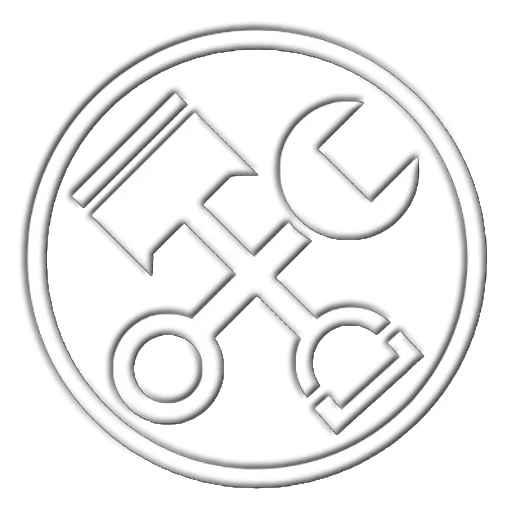Role of the Power Steering Rack
The power steering rack is a part that connects the driver’s steering movements to the wheels.
It uses power from the power steering pump (or an electric motor) to help reduce the friction resistance between the tires and the road, so the vehicle can be steered smoothly with less effort, even if it is heavy.
Types of Power Steering Systems
- Hydraulic Power Steering (HPS)
- Electric Power Steering (EPS)
Structure and Operation of Hydraulic Power Steering
When Driving Straight
The power steering rack is equipped with a power cylinder that includes an integrated piston, which separates the left and right hydraulic chambers.
When there is no steering input and the vehicle is moving straight, the pressurized fluid delivered by the power steering pump flows directly back to the reservoir without acting on the piston, so no steering assist is provided.
During Steering Operation or Turning
When the steering wheel is turned, friction resistance from the road surface increases, causing a difference in hydraulic pressure.
This pressure difference pushes the piston within the power cylinder, and the fluid in the hydraulic chamber on the side pushed by the piston is returned to the reservoir, generating assistive force to move the rack.
As a result, the driver’s effort is reduced, allowing for smoother and more responsive steering.
Furthermore, to improve handling and ensure safety, the steering assist is designed to vary according to vehicle speed.
At low speeds, steering effort is lightened for easier maneuvering, while at higher speeds, appropriate resistance is provided to balance control and stability.
Common Symptoms and Possible Causes of Failure
- Fluid leakage
- Deterioration or damage of oil seals
- Corrosion or cracks in the rack case
- Cracks in hoses or pipes, and loosening at connection points
- Excessive play or looseness
- Wear of tie rod ends or rack ends
- Wear of rack gear and pinion
- Wear of joint components
- Deterioration of rack bushings
- Unusual noises
- Air trapped in the system
- Wear or contamination inside the rack
- Deterioration of steering joints or bearings
- Degradation or insufficient power steering fluid
- Heavy steering feel
- Wear or sticking in sliding parts inside the rack
- Blockages or seizing inside the rack
- Insufficient or degraded power steering fluid
- Abnormalities on the power steering pump side
